| Category | Name | Difficulty | Status |
|---|---|---|---|
| Web | Eldoria Panel | Medium | Not Completed ❌ |
A development instance of a panel related to the Eldoria simulation was found. Try to infiltrate it to reveal Malakar’s secrets.
Analysis
I started this one by directly downloading the source code. When first accessing the challenge, we are presented with a login page:
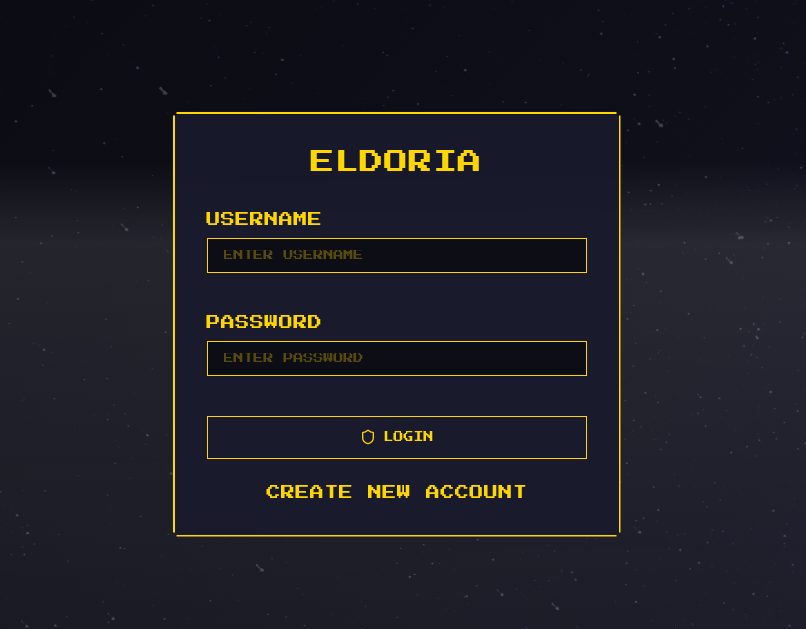
It has also the option to create a new account.
When checking if I can create an account with the username admin I get back a message saying that the username is already taken:
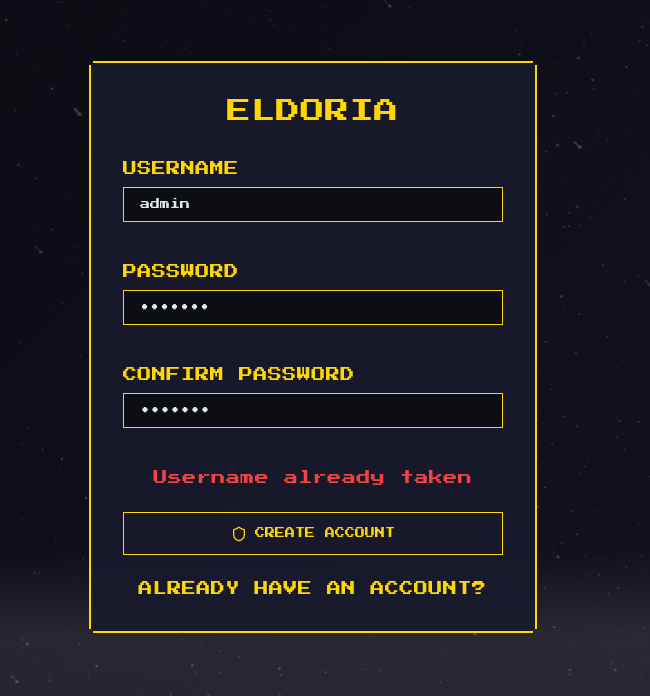
Meaning, we probably need to access the admin account to acquire the flag.
Continuing after creating an account, we are redirected to a dashboard:
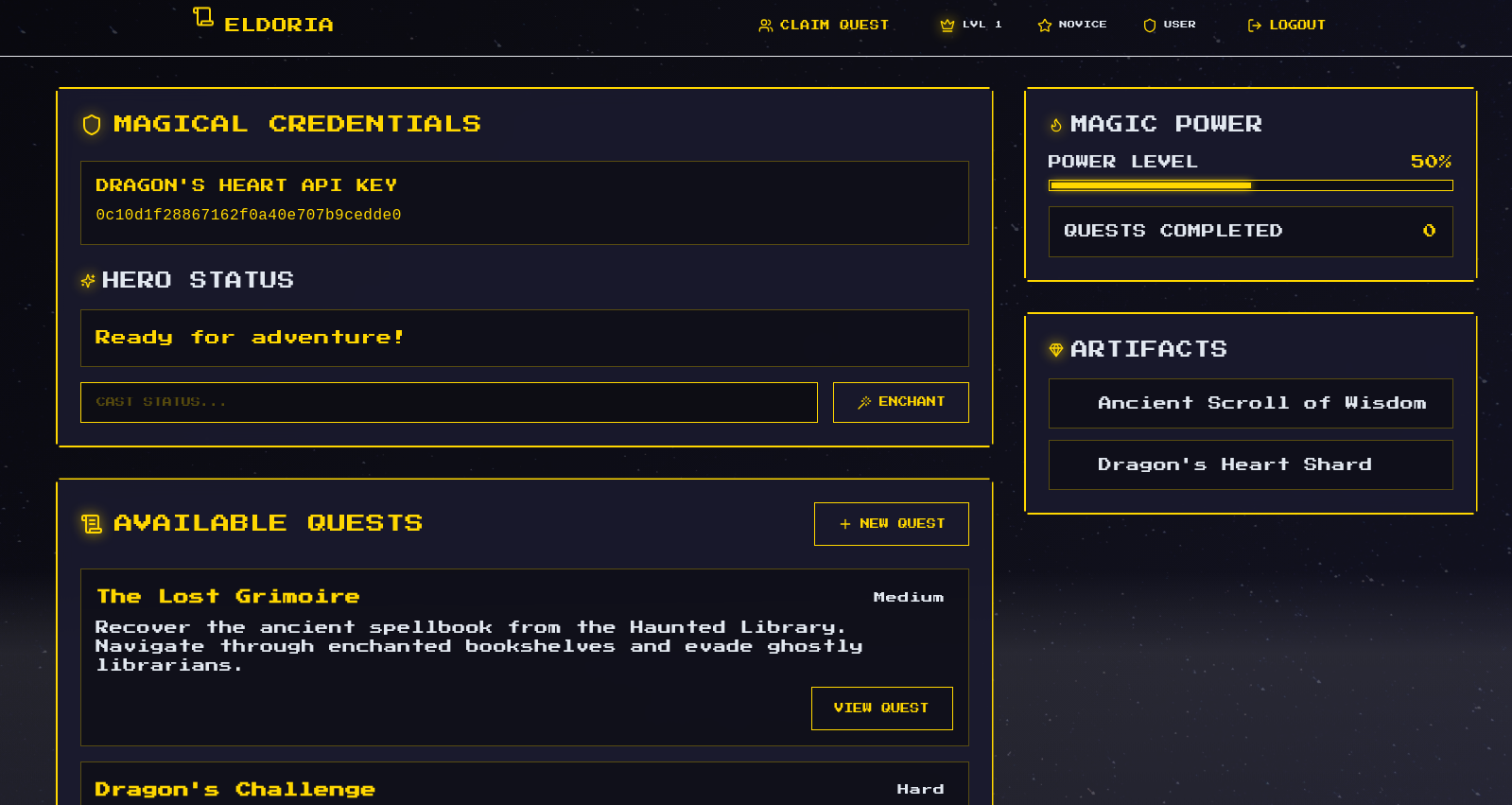
Here we have a couple of options. There is a “Dragon’s heart API key” and a “Hero Status” field. We can type a new message and click “Enchant” to update our hero status.
The options on the “Artifacts” section don’t do anything.
Under the “Available Quests” section, the “+ New Quest” doesn’t do anything. By clicking on “View Quest” opens a new page describing the quest:
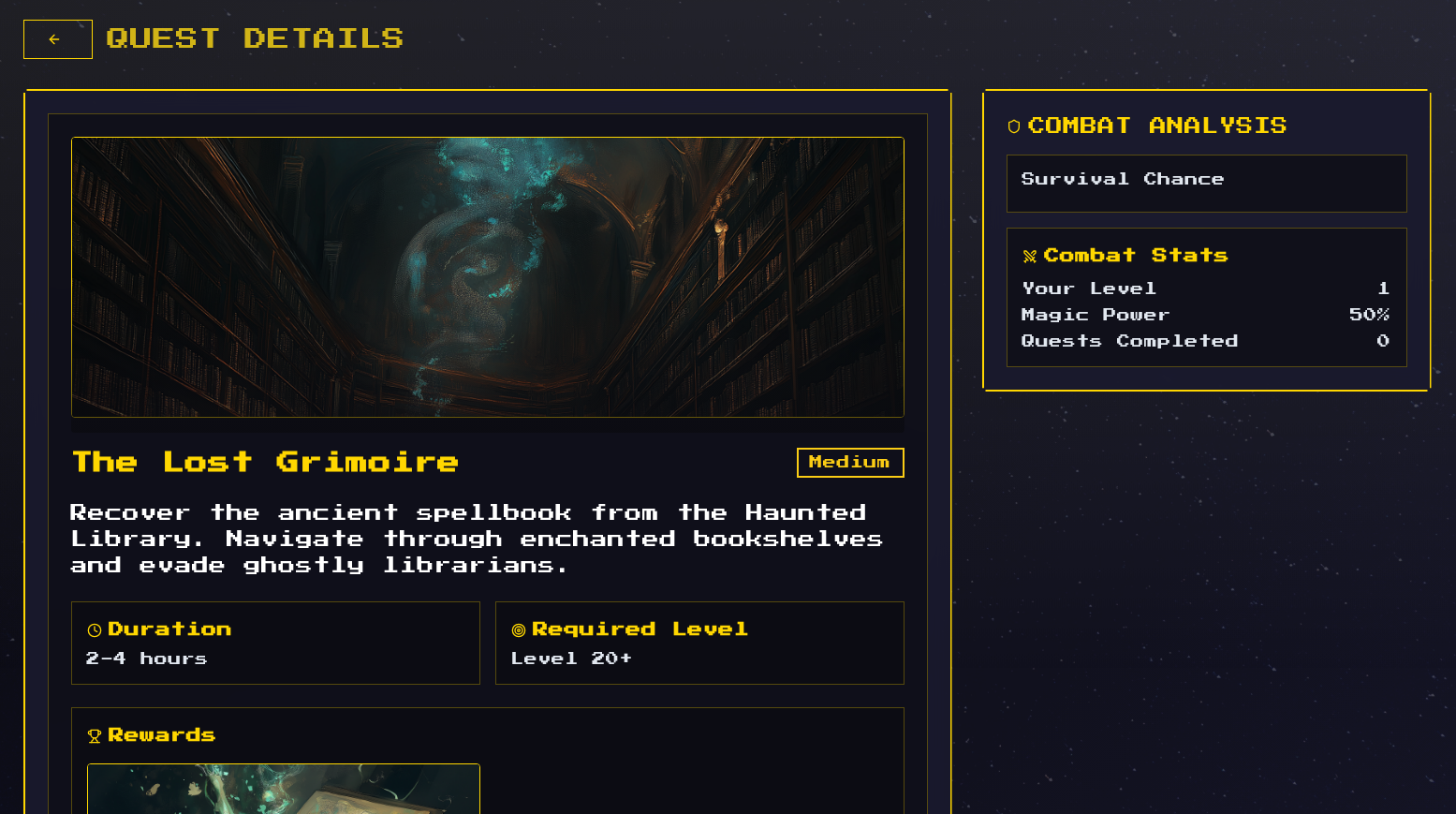
Nothing much can be done here.
Going back to the dashboard, on the top of the screen there is a “Claim Quest” option, where you are sent to the following page:
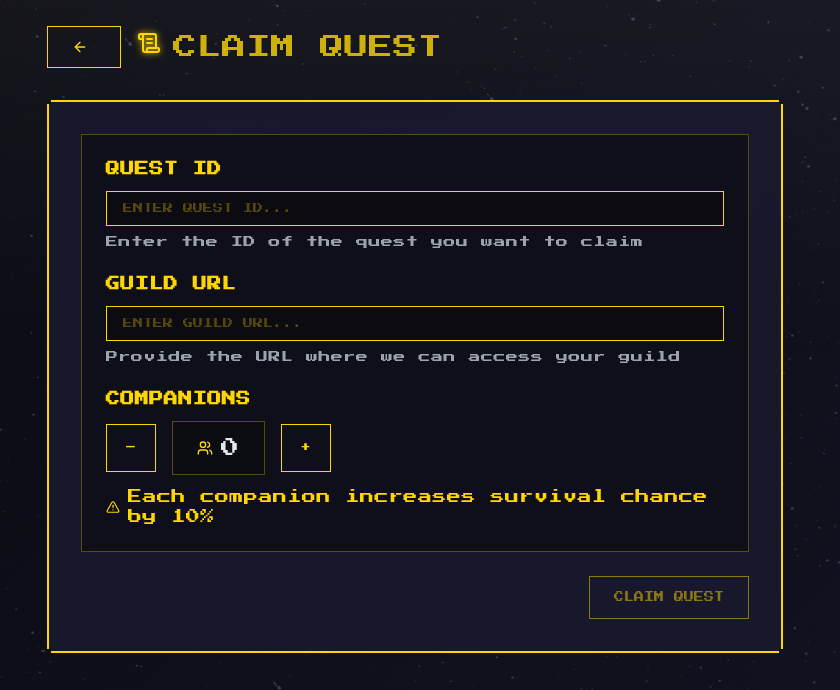
Here you can specify a quest id, a guild URL and a the number of companions.
Going through the source code of the pages, I saw that there is a admin page under /admin and some admin specific endpoints as well.
GET /api/admin/appSettings
POST /api/admin/appSettings
POST /api/admin/cleanDatabase
POST /api/admin/updateAnnouncement
They are all protected by a $adminApiKeyMiddleware function that checks for a admin session or a X-API-Key from an admin account.
The /admin page has a check that not only looks for a admin session, it also checks if the adminCookie is set to true.
...
function isAdmin(Request $request) {
return (isset($_SESSION['user'])
&& $_SESSION['user']['is_admin'] == 1
&& isset($_COOKIE['adminCookie'])
&& $_COOKIE['adminCookie'] === 'true');
}
...
There is also an /bot/run_bot.py file that simulates the behavior of a admin account. This bot is triggered by the /api/claimQuest API call, and it looks like the purpose is to simulate someone manually reviewing the guild website by accessing the provided URL.
...
driver = webdriver.Chrome(options=chrome_options)
try:
driver.get("http://127.0.0.1:9000")
username_field = driver.find_element(By.ID, "username")
password_field = driver.find_element(By.ID, "password")
username_field.send_keys(admin_username)
password_field.send_keys(admin_password)
submit_button = driver.find_element(By.ID, "submitBtn")
submit_button.click()
driver.get(quest_url) # The provided guild URL
time.sleep(5)
except Exception as e:
print(f"Error during automated login and navigation: {e}", file=sys.stderr)
sys.exit(1)
...
This gives us the opportunity to steal the admin session cookie. But how to acquire the flag?
I accessed the docker container and saw that there is a sqlite database file. I downloaded it back to my machine, and uppon analysis, it has the following data:
- A
app_settingstable that stores the running application settings (duh!); - A
configtable that is used to store the admin announcement; - A
queststable that store the quest data that is show on the dashboard; - A
userstable - that stores users.
Looking at the app_settings table, it looks like the path that the templates are retrieved from when rendered is stored here.
sqlite> SELECT * FROM app_settings;
template_path | /app/src/../templates
database_driver | sqlite
database_name | /app/src/../data/database.sqlite
And the users table just confirmed my suspicion that there is an admin account.
sqlite> SELECT * FROM users;
1|admin|<random passwd>|1|817d34478052551f65cb1296841d8e19|Ready for adventure!
2|hero|heropass|0|544dc162865a2a0fe692e8569700d5ed|Ready for adventure!
So, if I have access to the admin account, I can maybe use the POST /api/admin/appSettings request to replace the local templates path with a remote URL pointing to a PHP that will spawn a Shell for me.
Double checking the render method, it use both file_exists and file_get_contents. Both methods that support retrieving data from a URL.
function render($filePath) {
if (!file_exists($filePath)) {
return "Error: File not found.";
}
$phpCode = file_get_contents($filePath);
ob_start();
eval("?>" . $phpCode);
return ob_get_clean();
}
Failing at it
I did some more research on XSS, and on this specific case I cannot steal the session cooking, since it has the httpOnly flag enabled. Meaning that JS cannot access the cookie itself.
The target would then have to be the admin’s API Key, since that can also be used to authenticate as the admin account.
...
# Used by normal requests
$apiKeyMiddleware = function (Request $request, $handler) use ($app) {
if (!isset($_SESSION['user'])) {
$apiKey = $request->getHeaderLine('X-API-Key');
if ($apiKey) {
$pdo = $app->getContainer()->get('db');
$stmt = $pdo->prepare("SELECT * FROM users WHERE api_key = ?");
$stmt->execute([$apiKey]);
$user = $stmt->fetch(PDO::FETCH_ASSOC);
if ($user) {
$_SESSION['user'] = [
'id' => $user['id'],
'username' => $user['username'],
'is_admin' => $user['is_admin'],
'api_key' => $user['api_key'],
'level' => 1,
'rank' => 'NOVICE',
'magicPower' => 50,
'questsCompleted' => 0,
'artifacts' => ["Ancient Scroll of Wisdom", "Dragon's Heart Shard"]
];
}
}
}
return $handler->handle($request);
};
# Used by admin specific requests
$adminApiKeyMiddleware = function (Request $request, $handler) use ($app) {
if (!isset($_SESSION['user'])) {
$apiKey = $request->getHeaderLine('X-API-Key');
if ($apiKey) {
$pdo = $app->getContainer()->get('db');
$stmt = $pdo->prepare("SELECT * FROM users WHERE api_key = ?");
$stmt->execute([$apiKey]);
$user = $stmt->fetch(PDO::FETCH_ASSOC);
if ($user && $user['is_admin'] === 1) {
$_SESSION['user'] = [
'id' => $user['id'],
'username' => $user['username'],
'is_admin' => $user['is_admin'],
'api_key' => $user['api_key'],
'level' => 1,
'rank' => 'NOVICE',
'magicPower' => 50,
'questsCompleted' => 0,
'artifacts' => ["Ancient Scroll of Wisdom", "Dragon's Heart Shard"]
];
}
}
}
return $handler->handle($request);
};
...
I couldn’t find a way steal that information though. I would need find a way to either redirect the /api/user result or the result of the /dashboard access when the bot accesses my website. But due to the different domains, I wasn’t able to authenticate on an iframe or through fetch.
I also tried to figure a way to directly modify the template settings POSTing to the route on click, but no success at that either.
Solution
XSS and stealing the admin token
Based on the official writeup I had the right idea, but the implementations of the exploit itself was not that simple.
It sends a URL to a page that executes a form POST to /api/updateStatus, taking advantage of a unchecked JSON validation on the server side.
Example (unfinished):
<html>
<body>
<form action="http://127.0.0.1:80/api/updateStatus" method="POST" enctype="text/plain">
<input type="hidden" name='status' />
</form>
<script>document.forms[0].submit();</script>
</body>
</html>
Because the user status is added to the session and later printed out on the dashboard, this then becomes a XSS vector.
When printing the status sourced from the user, the content is parse through a DOMPurify.sanitize call, and set to innerHTML, which is a mitigation tactic for XSS.
I believe this attack to be a bit sophisticated since it relies on a bypass of these tactics, and I myself probably wouldn’t be able to solve this without prior knowledge of it.
Now with access to the admin token, we can authenticate a request updating the app_settings to set the template to our own path, which is essentially a RFI (Remote File Inclusion).